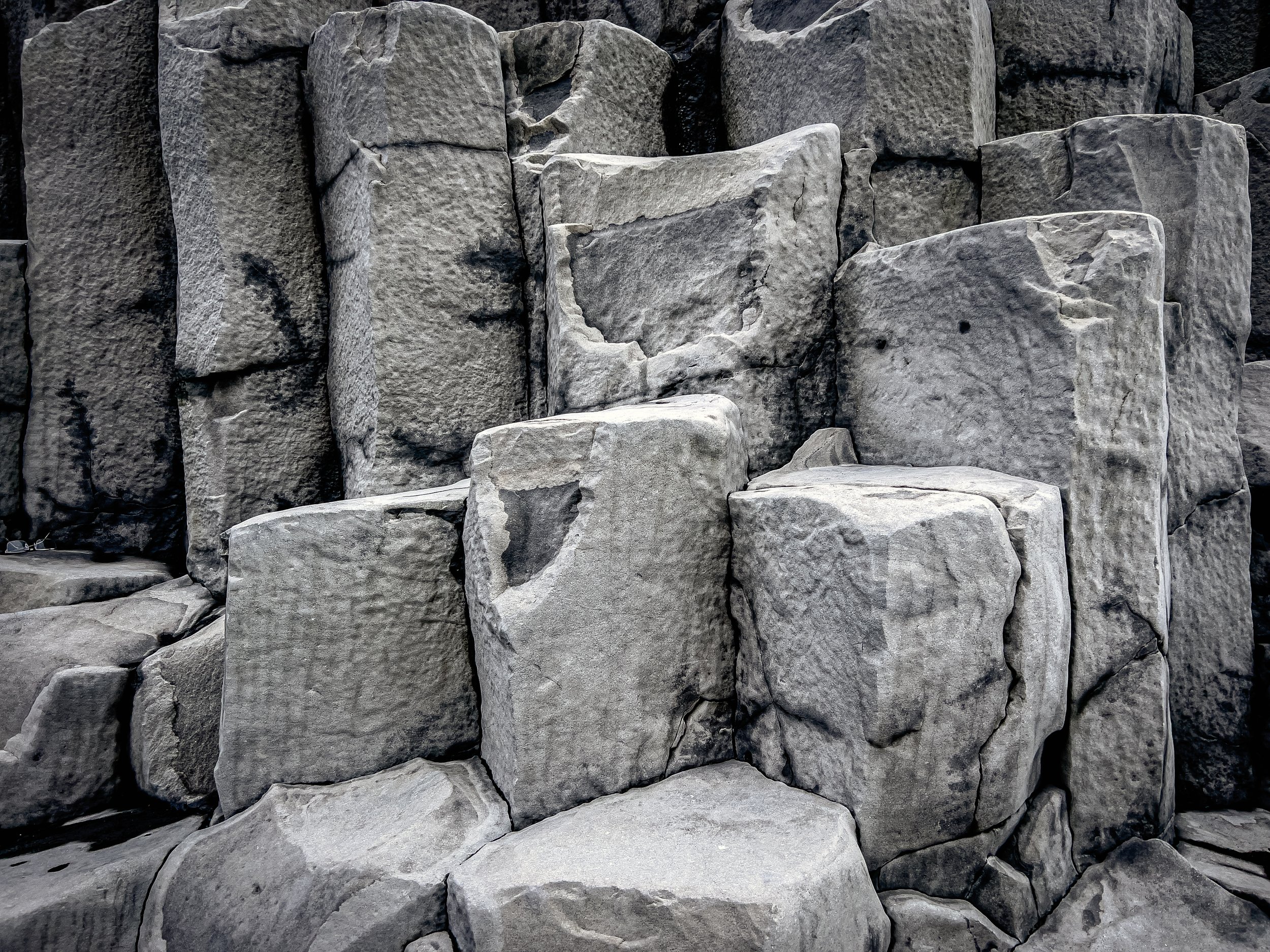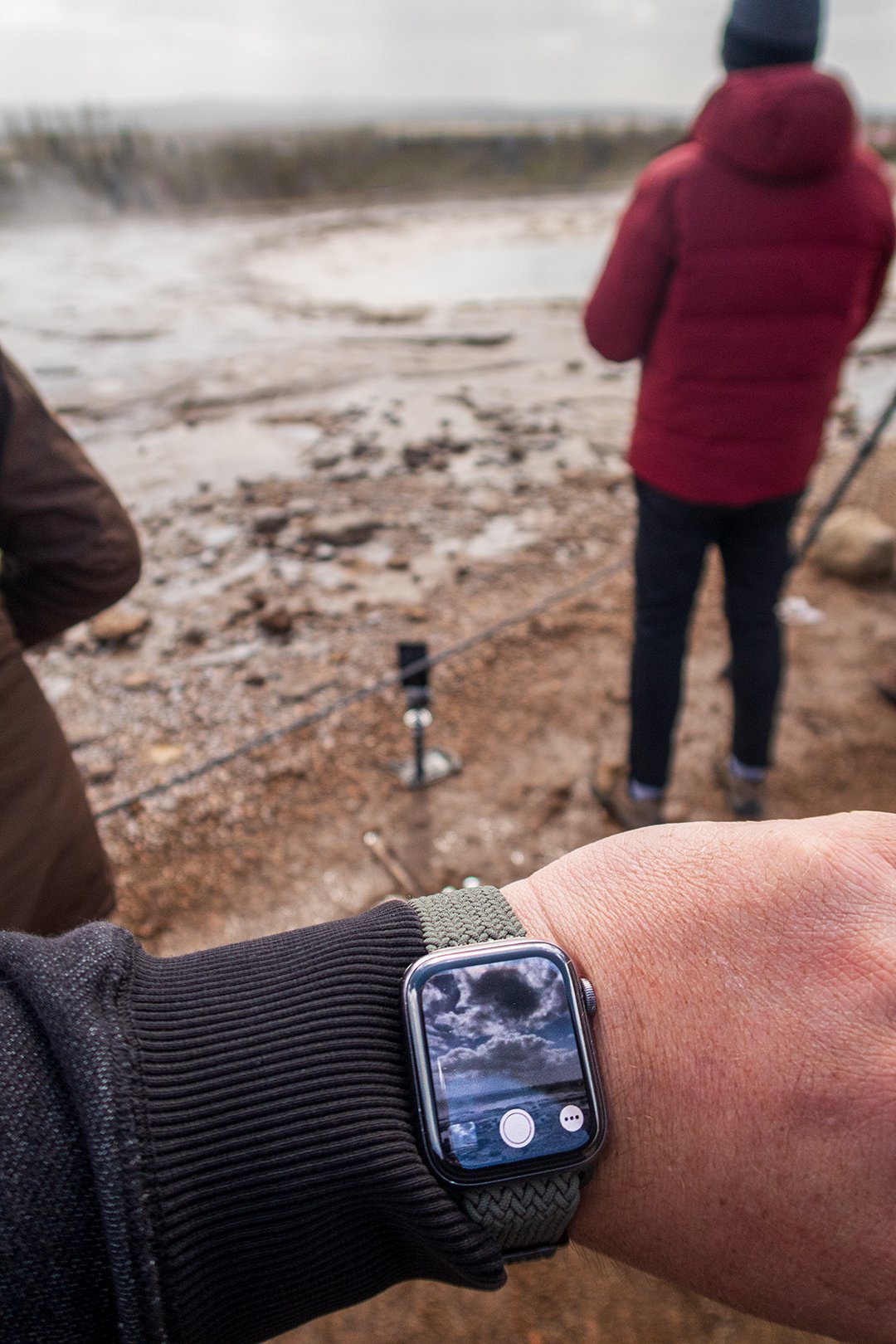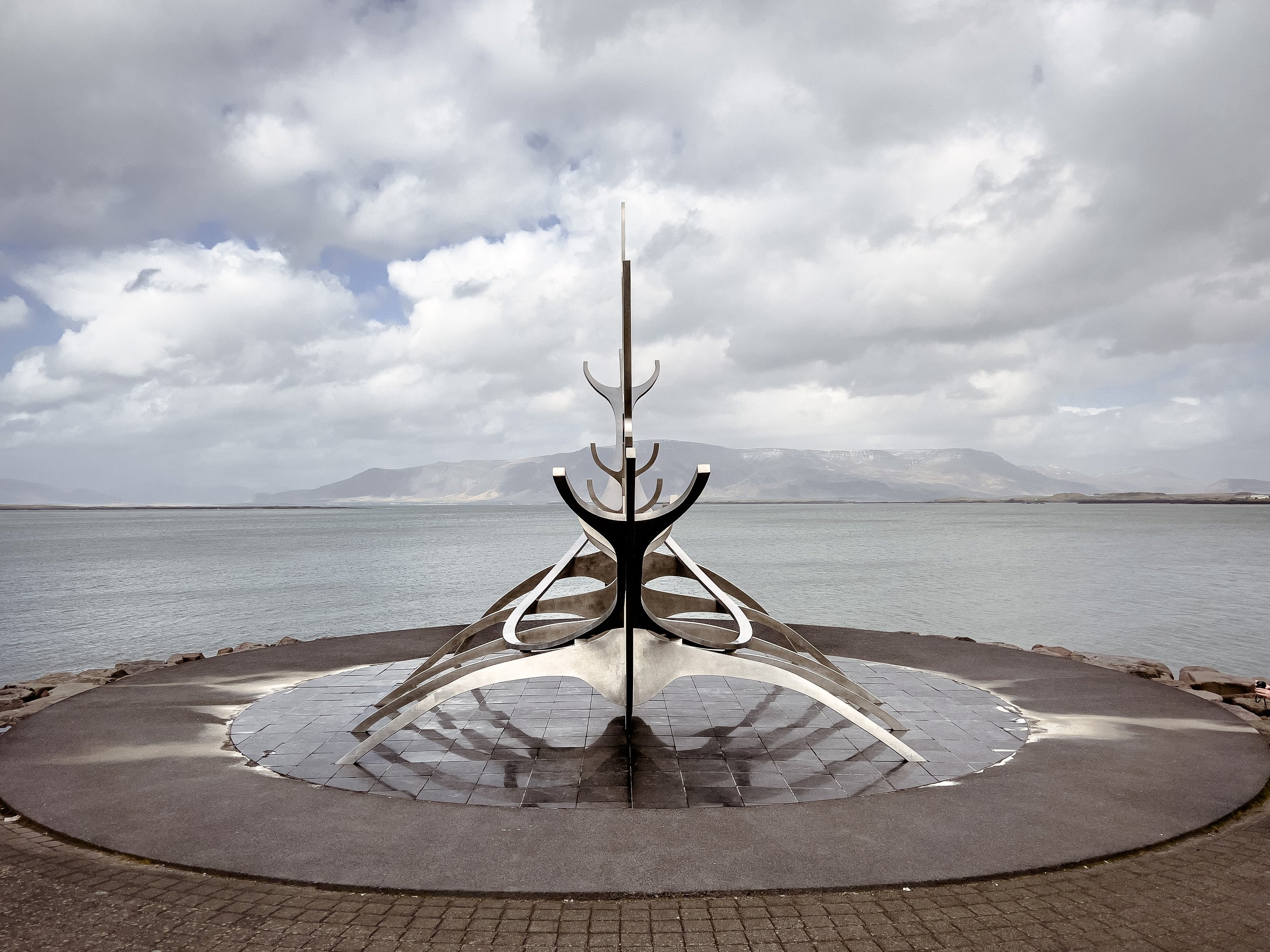The Handle in Iceland: A Platypod Mobile Photography Adventure
Welcome back, team! Today, I'm thrilled to share with you an unforgettable two-day photography adventure in the majestic land of Iceland. Armed with the innovative Platypod Handle—an extendable photography tool that revolutionises the way we capture stunning images—we braved the unforgiving Icelandic weather, battled gale-force winds, and embarked on a 450-mile journey through breathtaking landscapes. Join me as we uncover the secrets of this incredible expedition.
Iceland, known for its dramatic vistas, otherworldly landscapes, and ever-changing weather conditions, has become a mecca for photographers seeking to capture its raw beauty. From cascading waterfalls to volcanic terrains, this Nordic island offers endless opportunities for stunning shots. However, photographing in Iceland can present numerous challenges, especially when confronted with unpredictable weather patterns and extreme winds that can easily turn your photography adventure into a wild rollercoaster ride.
As a Platypod Pro, I had the privilege of testing the new Platypod Handle, a versatile and compact accessory that mounts on a Platypod or tripod, extending the connection between the camera and the ball head. This game-changing tool proved invaluable in overcoming the obstacles presented by Iceland's wild weather. Its stability and adaptability ensured that my shots remained sharp and free from the unwanted motion blur caused by the powerful gusts that seemed to follow us throughout our journey.
During our two-day escapade, we covered 450 miles, venturing deep into the heart of Iceland's untamed wilderness. Each location brought new challenges and awe-inspiring opportunities, from the iconic Golden Circle to the mesmerising Jökulsárlón glacier lagoon. As we traversed the diverse landscapes, the Platypod Handle provided me with the flexibility to elevate my mobile photography to new heights, quite literally.
In this blog post, I will share the highlights of our mobile photography adventure and delve into the captivating imagery captured with the Platypod Handle. From the stunning waterfalls and mystical geothermal areas to the world-famous Icelandic horses grazing against a backdrop of rugged mountains, you'll be transported to this enchanting land through my iPhone lens.
Join me as we uncover the hidden gems of Iceland, discover the power of mobile photography accessories, and witness the magic that unfolded during our unforgettable journey. Let's embark on this visual odyssey together, embracing the spirit of exploration and the thrill of capturing the essence of Iceland's unbridled beauty.
We started by heading straight to the iconic Seljalandsfoss from the airport, picking up the requisite snacks on the way. As we headed over the mountain pass from Reykjavik to Hveragerði, the weather warnings I’d seen were accurate and had set us up for quite a challenge. SafeTravel.is had warned of a storm all over the country that had hail, strong wind gusts near the mountains, and difficult driving conditions as a result of the 23m/s wind speed. Seljalandsfoss was just a few hours away, and on arrival, the wind made it difficult to open the car door. This is the famous waterfall that you can walk behind, but the spray was intense today. That didn’t stop me, of course.
After getting soaked at Seljalandsfoss we hit the road again to get to the next stop - Skógafoss. The wind got even worse and the good sidelight we had was blocked by heavy clouds. The moment we pulled in the hail began so after taking refuge in the car for a few minutes while it passed the moment came to get out and take some shots. You can see the power of the wind in the spray near the top of the 61m falls.
In this long exposure shot it’s easy to see how the iPhone uses computational photography, stacking exposures to achieve its Long Exposure effect in a Live Photo rather than using a constantly open shutter, which is the method we’re used to in regular photography. It’s easiest to see this in the flowing river.
With fingers crossed for a gap in the weather, it was time to move on again, this time to Reynisfjara, the Black Sand Beach. The weather warning for the beach was for extreme wind, with a warning not to enter the cave. This location is hazardous, even on a good day, owing to the sneaker waves that take people out to sea with their power. The attraction here was the basalt columns. Basalt columns are a fascinating geological phenomenon that captivates scientists and photographers alike. These natural formations occur when lava flows cool and solidify, creating hexagonal or polygonal basalt rock columns. The distinctive shape of these columns results from the slow and uniform cooling process, which causes the rock to contract and crack in a pattern resembling a honeycomb. Found in various other parts of the world, such as the Giant's Causeway in Northern Ireland and the Devil’s Postpile in California, basalt columns offer a striking visual spectacle. Their symmetrical arrangement, often standing tall and uniform, creates a surreal and almost otherworldly ambience. Photographers are drawn to these unique formations, capturing their geometric beauty and the interplay of light and shadow as the sun dances across the rock faces. Whether seen up close or from a distance, basalt columns serve as a testament to the wonders of nature and provide endless artistic inspiration for those who appreciate the intricate marvels that our planet has to offer. I aimed to capture some of their detail, texture and colour. Here’s a selfie to begin, for scale. Also, note the sideways beard caused by the extreme wind!
It was time for lunch. In Iceland, a delightful culinary tradition awaits those seeking a unique gastronomic experience: soup in bread. This traditional Icelandic dish, "súpa í brauði," combines two comforting elements into one delicious and convenient meal. Picture freshly baked round bread hollowed out and filled to the brim with a hearty and flavourful soup. This ingenious pairing satisfies hunger and warms the soul, especially during Iceland's chilly winters (and stormy summers). From creamy seafood chowders to hearty vegetable stews, the variations of soup in bread are as diverse as the landscapes that surround this Nordic island. We took the opportunity to indulge in the delightful experience of soup in bread and let its warm and savoury embrace envelop our senses at The Soup Company in Vík. Vík sits at the southern tip of Iceland, and every time I’ve gone through it since I first visited Iceland regularly, it’s grown. There are now plenty of restaurant options, the Wool Shop for all your souvenir needs, and Skool Beans for the best coffee in Iceland. This is the Lava Soup: -
Now fuelled for the drive further east, our destination was Jökulsárlón. It was a very long drive, so we broke it up with a few short stops that allowed us to stretch our legs. Kirkjugólf, meaning "church floor" in Icelandic, is a unique natural wonder near Kirkjubæjarklaustur. Staying on the theme for the basalt columns, this fascinating geological phenomenon is a sight to behold, resembling an intricately tiled mosaic floor. However, instead of manufactured tiles, Kurkjugolf comprises hexagonal basalt columns. These columns, formed by ancient volcanic activity, create a surreal landscape of interlocking patterns and shapes. Kirkjugólf offers a mesmerising blend of nature's artistry and geological history. Visitors can walk across this natural "church floor," marvelling at the symmetrical patterns and formations shaped by the forces of nature over millions of years. It's a truly remarkable sight that showcases Iceland's awe-inspiring beauty and geologic diversity. The information sign says to look out for the ten-sided stone, but I couldn’t find it.
Stjórnarfoss is a hidden gem nestled in the stunning landscapes of Iceland. Also located near the village of Kirkjubæjarklaustur in the south of the country, this picturesque waterfall showcases the raw beauty of Iceland's natural wonders. With its cascading waters tumbling down a series of rocky steps, surrounded by lush greenery, Stjórnarfoss offers a tranquil and enchanting setting, perfect for immersing oneself in the peaceful serenity of Icelandic nature.
The next stop was the Yoda Cave. No explanation is needed!
Southeast Iceland is a region of unparalleled natural beauty, characterised by its glacial flood plains, lava fields, and one of the most captivating sights in the country: Jökulsárlón. The glacial flood plains, also known as sandur, are vast stretches of flat, sandy terrain created by the outflow of meltwater from glaciers. These plains are scattered with small rivers and meandering streams, surrounded by dramatic mountains and glacial tongues that descend from the ice caps. They seem endless and the drive through them can take hours, particularly with the strong winds we were up against.
Interwoven with the glacial flood plains are mesmerising lava fields, remnants of past volcanic activity. These fields display a stark contrast of blackened lava rocks against the vibrant green moss that blankets the landscape. The lava formations are an otherworldly sight, showcasing the raw power and geological history of Iceland.
Amidst this awe-inspiring setting lies Jökulsárlón, a breathtaking glacier lagoon. As one of Iceland's most famous attractions, Jökulsárlón is a shimmering expanse of crystal-clear, turquoise waters dotted with icebergs that have calved from the nearby Breiðamerkurjökull glacier, part of the larger Vatnajökull glacier and National Park. The sight of these massive ice sculptures drifting serenely in the lagoon is nothing short of magical. Visitors can take boat tours or simply stand on the black sand beach, aptly named Diamond Beach, where the icebergs wash ashore, creating a surreal and photogenic scene.
Exploring the glacial flood plains, lava fields, and Jökulsárlón in southeast Iceland is an unforgettable journey into the country's untamed wilderness. The stark beauty, unique geological formations, and the ever-changing nature of the glacial lagoon create a captivating experience that will leave visitors in awe of the sheer power and beauty of nature.
Home for the night was the FossHotel Glacier Lagoon and the next morning we drove back westwards. The first stop was a very quick one at Hofskirkja, a remarkable and historic turf church located in the village of Hof in southeast Iceland. This unique architectural gem dates back to the 19th century and is one of the few remaining turf churches in the country. The church's exterior is constructed with a combination of timber and turf, giving it a distinctive and charming appearance that blends harmoniously with the surrounding landscape. Stepping inside Hofskirkja is like stepping back in time, as the interior features traditional wooden furnishings and an atmosphere of tranquility and reverence. The church stands as a testament to Iceland's rich cultural heritage and is a must-visit destination for those seeking a glimpse into the country's architectural and religious history.
Because of the weather, which was still intense, we decided to stay on the road and get away from the open plains, making a four-hour drive into the Golden Circle. The Golden Circle is a renowned and iconic tourist route in Iceland that encompasses some of the country's most captivating natural wonders. This circular route, located in the southwest part of Iceland, offers a condensed and awe-inspiring journey through the country's diverse landscapes. The Golden Circle comprises three main attractions: Þingvellir National Park, Geysir geothermal area, and Gullfoss waterfall.
Side note: Þ is Th, as in Thor (Þor)
Þingvellir National Park is not only a UNESCO World Heritage Site but also holds immense historical and cultural significance as the birthplace of the Icelandic parliament. Visitors can walk between the tectonic plates of Eurasia and North America, immersing themselves in a rift valley formed by the shifting of these continents.
Our first stop in the Golden Circle was the Geysir geothermal area, where the famous Strokkur geyser steals the show. This powerful geyser erupts every few minutes, shooting a column of hot water and steam into the air, creating a thrilling spectacle. The area is also adorned with bubbling mud pots, steam vents, and other geothermal features that showcase Iceland's volcanic activity.
To fire my iPhone camera I used my Apple Watch, meaning I was free to compose my shot and wait patiently for the eruption to happen.
I love how the blue in the water looks at the moment of eruption. The air bubbles rushing up cause a dome on the waters surface for a brief moment before the surface tension is broken and steam shoots up into the air.
To show scale, as well as the crowds of people, here’s a shot from farther back: -
Finally, the Golden Circle concludes with the majestic Gullfoss waterfall, meaning the "Golden Falls." This magnificent two-tiered waterfall plunges dramatically into a deep canyon, with mist and often rainbows dancing in the sunlight. Its raw power and sheer beauty leave visitors in awe of nature's grandeur.
Beyond these three primary attractions, the Golden Circle also offers additional delights, such as traditional Icelandic farms, picturesque landscapes, and opportunities to witness Icelandic horses grazing in the meadows.
The Golden Circle is a popular day trip from Reykjavik, providing visitors with a taste of Iceland's natural wonders, geological marvels, and cultural heritage. Its accessibility, breathtaking scenery, and captivating landmarks make it an essential route for travellers seeking to immerse themselves in the splendours of Iceland's diverse landscapes.
Embarking on an unforgettable photography adventure in Iceland, we faced an unexpected challenge: a relentless storm that tested our determination and resilience. Armed with the innovative Platypod eXtreme, Handle and Platyball Ergo, we defied the elements and captured stunning images amidst the chaos. This remarkable journey showcased the advancements in mobile photography that enabled us to seize the extraordinary moments that unfolded before us.
As the storm raged on, our Platypod proved to be a reliable companion, offering stability and versatility that allowed us to capture sharp and awe-inspiring shots. Its extendable handle elevated our mobile photography to new heights, enabling us to overcome the weather's relentless force and bring our vision to life.
The storm, with its fierce winds and unpredictable conditions, symbolised the challenges we often encounter in life. However, just as we persevered and triumphed over the storm, we also discovered valuable life lessons along the way. These lessons, filled with stories of adventure and captured through the lens, have been compiled in my latest book, "The Meaning of Life." Through this book, readers will delve into the tales of our global photography adventures, gaining insight into the profound experiences and transformative moments that have shaped our perspective on life.
"The Meaning of Life" is a profound reflection on the wonders of the world and the lessons we learn from our journeys. From the mystical landscapes of Iceland to the vibrant streets of Tokyo and the remote corners of Africa, these stories unravel the secrets to finding purpose, embracing challenges, and uncovering the true meaning of our existence.
Join me on this incredible journey, where the storm serves as a metaphor for the obstacles we face in life, and the Platypod represents the tools that empower us to overcome them. Let me inspire you to embark on your own adventures, armed with the advancements in mobile photography and a newfound resilience to conquer the storms that life throws your way.
Are you ready to embrace the storm and discover the meaning of life? Grab a copy of "The Meaning of Life" today and embark on a journey of inspiration, discovery, and self-reflection through the lens of photography.
Thanks for reading about my Mobile Photography Adventure in Iceland!
Much love
Dave































